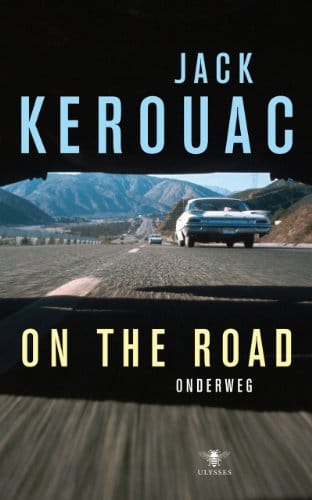On the Road: Why Jack Kerouac’s Classic Still Speaks to Modern Wanderers
Explore why Jack Kerouac’s On the Road still fuels wanderlust, shapes counterculture, and offers timeless travel lessons for modern readers and nomads.

Introduction: A Book That Refuses to Park
Jack Kerouac’s 1957 novel On the Road is more than a frenetic cross-country diary. It is a cultural waypoint that continues to ignite wanderlust, challenge social norms, and soundtrack countless playlists for open-window drives. This article explores why the book remains essential reading, how its themes resonate with today’s travelers, and what lessons modern nomads can lift from its restless pages.
Quick Synopsis of the Feverish Journey
The narrative follows Sal Paradise, Kerouac’s loosely veiled alter ego, and the electrifying Dean Moriarty as they zigzag across America from New York to San Francisco, then south to Mexico. Fueled by jazz, poetry, and Benzedrine, the pair collects a revolving cast of hitchhikers, lovers, and night-owls. Their odyssey captures the pulse of post-war America, where highways doubled as liberation routes and every roadside diner promised revelation. While plot is loose, momentum is everything; the road itself becomes the most vivid character.
Main Themes That Keep the Engine Running
Freedom and the American Landscape
On the Road is a love letter to vast spaces: the snow-choked Rockies, the sweltering deserts of Texas, the humid jazz clubs of New Orleans. Kerouac treats the map like sheet music, improvising routes the way a saxophonist bends notes. For modern readers bombarded by schedules and apps, Sal’s impulsive departures offer a reminder that genuine freedom often lies beyond data coverage.
Friendship, Frenzy, and Flaws
At the book’s heart is the volatile friendship between Sal and Dean. Their bond oscillates between spiritual brotherhood and reckless co-dependency. Dean’s manic charisma magnetizes everyone he meets, yet his carelessness leaves emotional wreckage. Kerouac refuses tidy resolutions, showing that true connection can be messy, impermanent, and still profoundly meaningful.
Search for Identity and Meaning
Post-war uncertainty breeds questions that today’s gig-economy generation still faces: Who am I outside my job? What happens after 3:00 a.m. philosophy fades with sunrise? Kerouac’s characters chase authenticity in smoky music halls and star-drenched deserts, echoing modern quests for mindfulness retreats and digital detox road trips.
The Beat Generation’s Cultural Aftershock
Upon publication, critics either hailed the novel as groundbreaking or condemned it as immoral. Regardless, On the Road galvanized the Beat Generation, a loosely knit group of writers including Allen Ginsberg and William S. Burroughs. Their rejection of materialism paved the way for the counterculture movements of the 1960s, influencing musicians like Bob Dylan and visual storytellers from Dennis Hopper to Wes Anderson. Today, hashtags such as #vanlife and #digitalnomad can trace DNA back to Kerouac’s typewriter scroll.
Why the Novel Still Converts New Readers
Modern audiences live in an era of hyper-connectivity, yet loneliness rates rise. Kerouac’s depiction of spontaneous human encounter—strangers swapping stories at truck stops or jazz clubs—offers an antidote to algorithmic isolation. The book’s prose, captured in jazz-influenced bursts, also mirrors the tempo of social media feeds, making it surprisingly digestible for smartphone readers once they acclimate to its beat cadence.
Travel Tips Inspired by Kerouac’s Mileage
Pack Light—Physically and Mentally
Sal carries little more than notebooks and a change of clothes. Adopting a minimalist approach today frees you to savor experiences over possessions. Replace half your suitcase with curiosity and you will never feel overburdened.
Follow the Soundtrack
Kerouac’s crew chases jazz riffs from Harlem to Denver. Craft a playlist before you depart; let shifting genres dictate detours. Music remains an underrated navigation tool for finding local culture beyond guidebooks.
Talk to Strangers—Safely
Every ride-share or campground neighbor holds a story. Strike up conversations while respecting boundaries. Some of the novel’s most memorable moments arise from random encounters, a tradition you can revive minus the 1950s hitchhiking risks.
Embrace Detours
When Dean impulsively heads south to Mexico, the journey’s texture changes entirely. If weather, road closures, or sudden inspiration redirect you, treat it as narrative spice rather than inconvenience. Serendipity rarely appears on GPS.
Cautions from the Flip Side of Freedom
Kerouac doesn’t romanticize everything. Poverty, addiction, and emotional fallout shadow the euphoria. Translating the novel’s spirit into modern travel means balancing spontaneity with self-care. Budget realistically, keep emergency contacts, and recognize when the next motel should be a rest stop, not a stage.
Reading On the Road in 2024: Practical Editions
Several editions include helpful footnotes that decode jazz slang, automobile models, and truncated city names. Audiobook versions, narrated by actors who understand the bebop rhythm, deliver an immersive entry point for commuters or treadmill travelers longing for open pavement.
Conclusion: The Road Ahead Is Still Open
More than six decades after its explosive debut, On the Road continues to map dreams onto asphalt. Whether you are plotting a coast-to-coast drive, building a van into a mobile office, or simply craving literary adrenaline, Kerouac’s masterpiece offers both cautionary tale and rallying cry. Read it, rev your engine—literal or metaphorical—and remember that sometimes the most important mileage is measured inside, not on the odometer.



